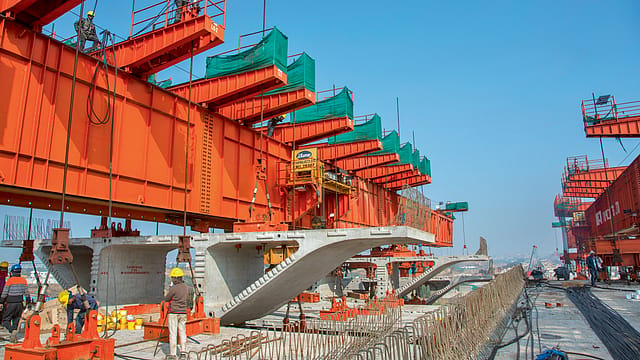For investors, it's time to bond with infra: CRISIL
ADVERTISEMENT

Infrastructure assets are becoming strong contenders for investment by the bond market due to their improving credit risk profile and long-term nature, CRISIL Ratings says, adding that investors can seize this opportunity.
The improvement in credit risk profile reflects the raft of policy decisions that have helped shore up the attractiveness of the Indian infrastructure sector as an investment destination by several notches, the ratings agency says in a note. These include more equitable risk sharing between the concessioning authorities and private developers; enhanced role of central counterparties leading to predictable payment cycles; the emergence of infrastructure investment trusts (InvITs) aiding in leverage reduction and broad-basing of ownership; and the Insolvency and Bankruptcy Code (IBC) and pre-IBC platforms facilitating faster stressed-asset resolutions.
Entities rated AAA and AA comprised 46% of the CRISIL Ratings infra portfolio last fiscal, compared with 22% in fiscal 2017. This, according to CRISIL, is reflected in the median ratings in its portfolio of infra assets improving from “BBB” in fiscal 2017 to “A+” in the last fiscal.
This comes at a time when the domestic infrastructure sectors have been able to attract over $74 billion foreign direct investments as per the Reserve Bank of India (RBI) in the past five fiscals, including from marquee global investors such as Blackstone, Brookfield, KKR, Macquarie, CDPQ and Canadian Pension Plan Investment Board.
“The government has taken a slew of measures to address legacy issues in the infrastructure sector. Risk sharing in contracts has improved with the concessioning authorities assuming their fair share of risks, and concession agreements revised to remove bottlenecks. Now, central counterparties are playing a greater role, and the introduction of InvITs has boosted investor confidence,” says Gurpreet Chhatwal, MD, CRISIL Ratings.
January 2026
Netflix, which has been in India for a decade, has successfully struck a balance between high-class premium content and pricing that attracts a range of customers. Find out how the U.S. streaming giant evolved in India, plus an exclusive interview with CEO Ted Sarandos. Also read about the Best Investments for 2026, and how rising growth and easing inflation will come in handy for finance minister Nirmala Sitharaman as she prepares Budget 2026.
Central counterparties such as the National Highways Authority of India (NHAI), the Solar Energy Corporation of India (SECI)/ NTPC, and the Power Grid Corporation of India have ensured predictability in the payment cycles, thus reducing cash-flow volatility materially, says CRISIL.
This has improved investor confidence — as reflected in the share of renewable energy projects with SECI and NTPC as counterparties expected to increase to 57% by next fiscal from 21% in fiscal 2019.
Also, the NHAI is contributing as much as 40% of the hybrid annuity model or HAM project cost in the construction phase, thereby significantly increasing its own skin in the game.
These developments make debt instruments of operational infrastructure assets amenable to bond market investors.
“Currently, infrastructure segment constitutes only 15% of the annual domestic bond issuance by volume. With improved risk profile, presence of a resolution platform and relatively stronger recovery prospects, infrastructure bond issuances can find favour with bond market investors. Given their long tenure, these can be a natural fit when it comes to investment requirements of patient capital investors,” says Somasekhar Vemuri, senior director, CRISIL.
